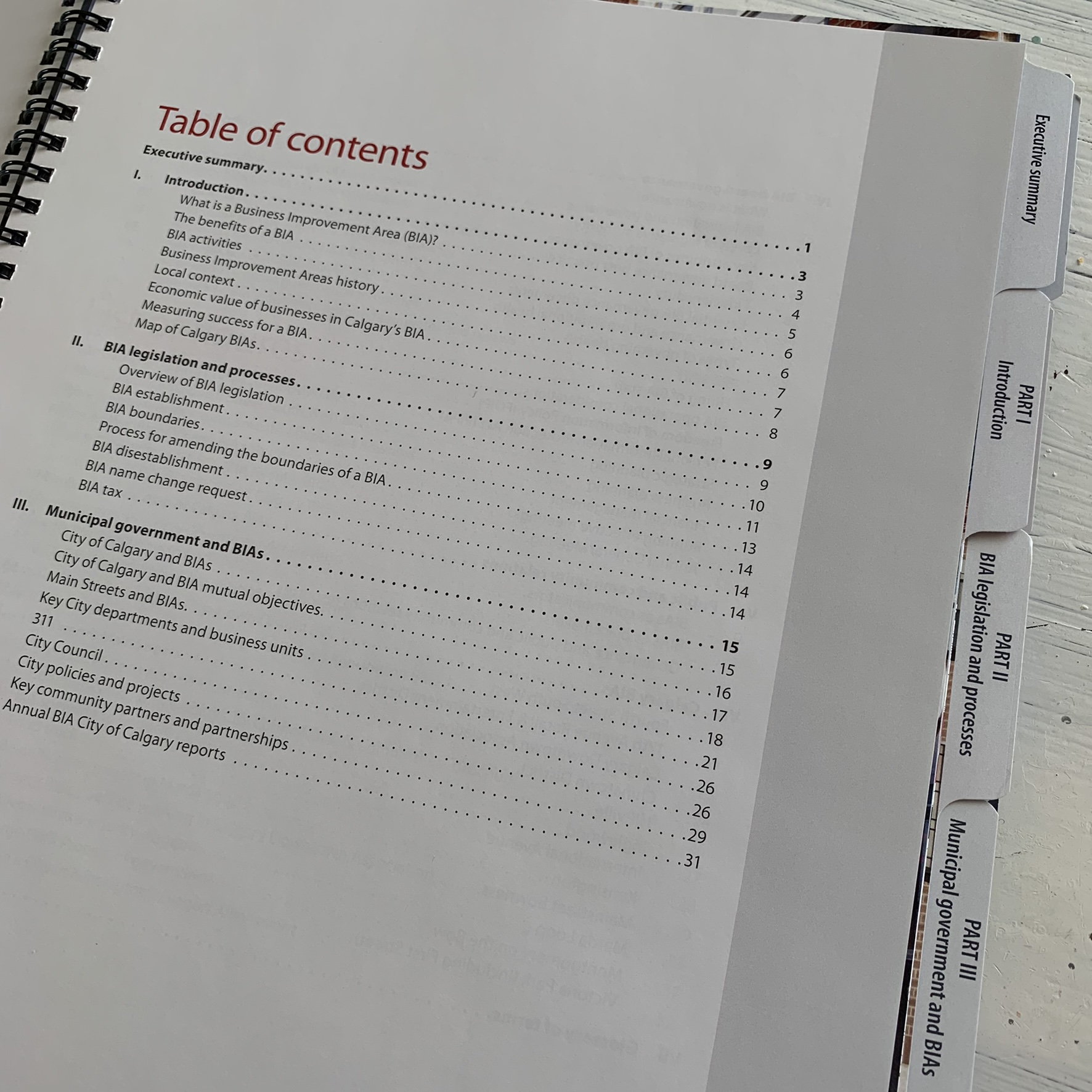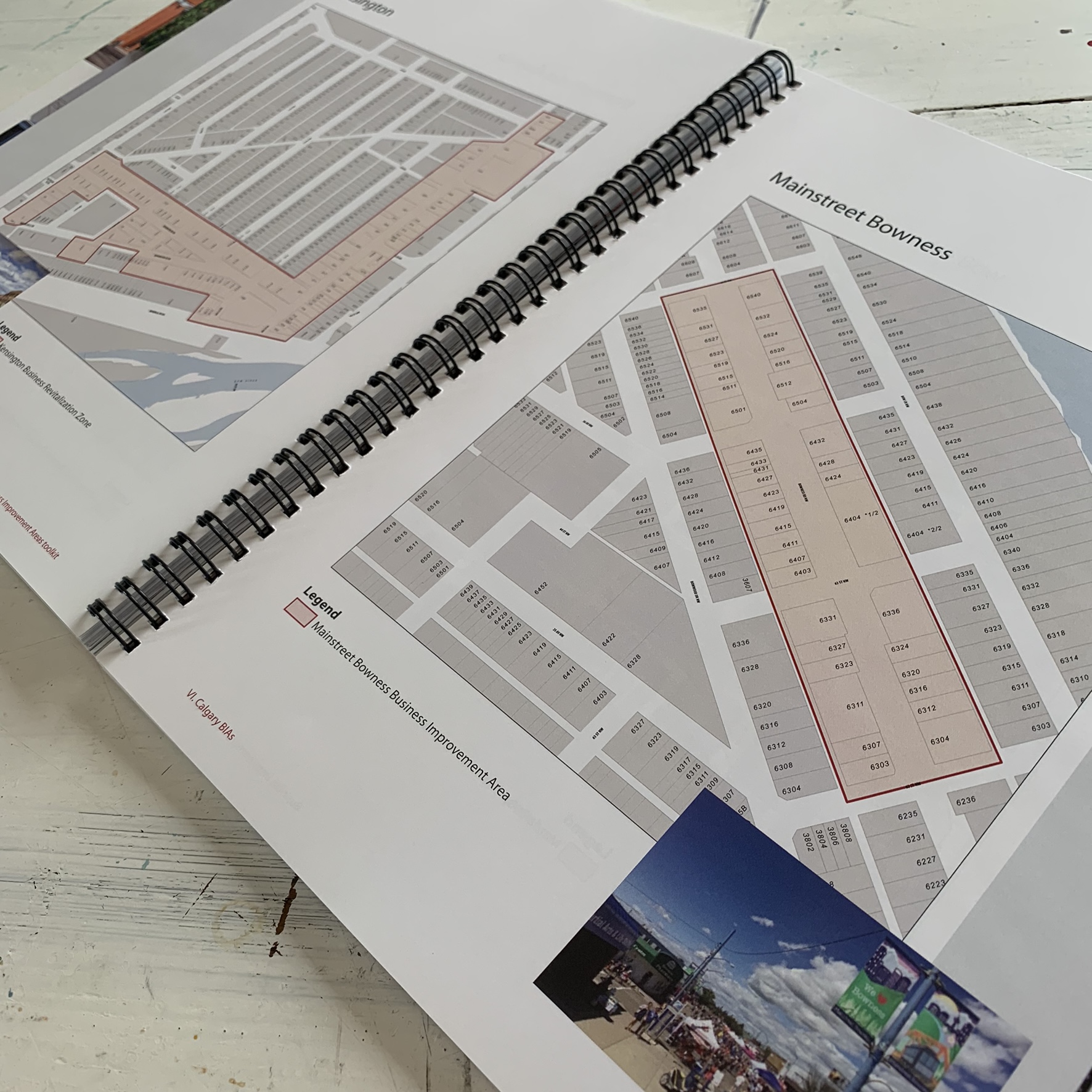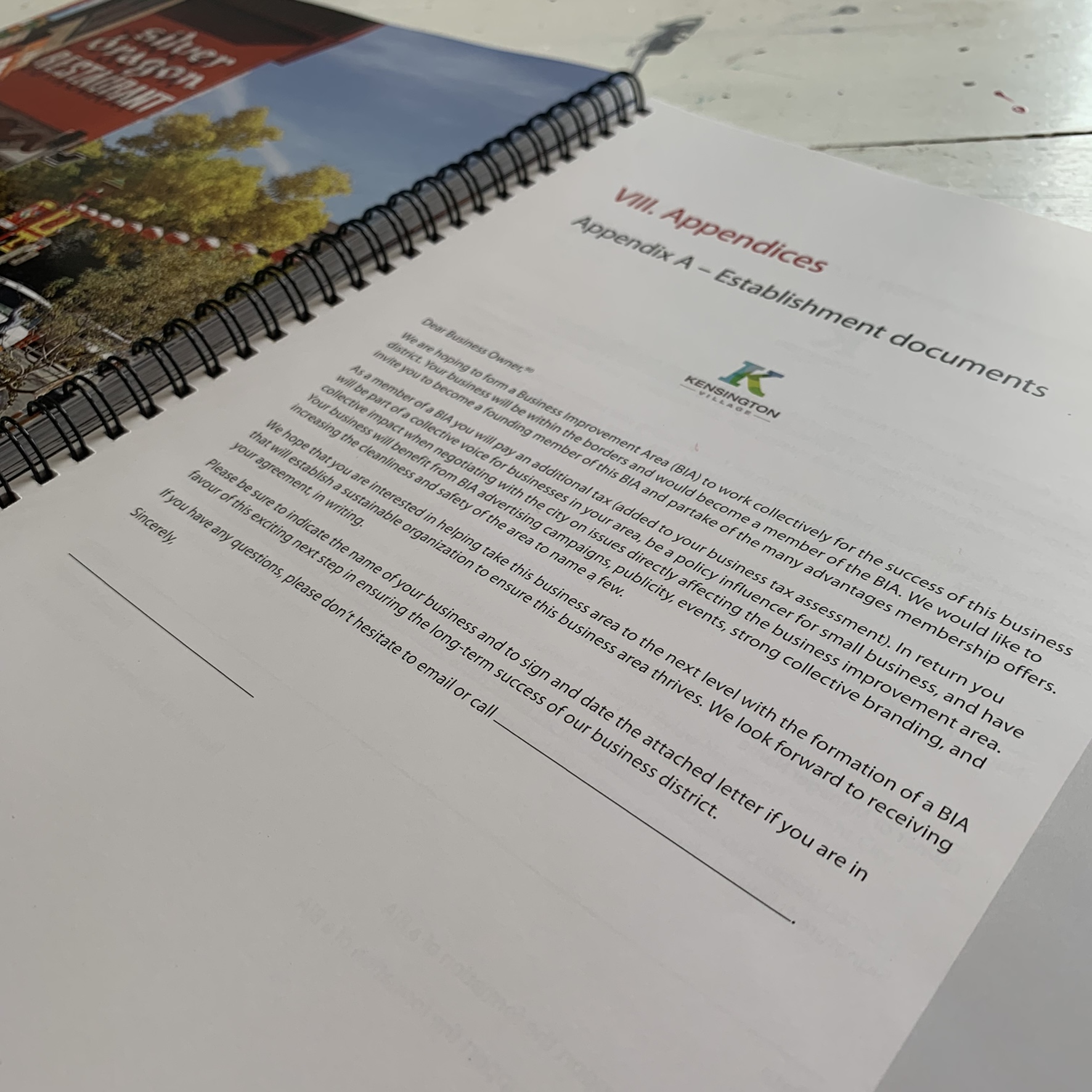In 2015, our Executive Director, Annie MacInnis, as Chair of the CBiz Board (the umbrella organization of Calgary BIAs), initiated discussions with the City of Calgary on the need for a BIA handbook. Over the next three years she provided extensive input and direction, working with the new City of Calgary BIA Liaison to develop the Toolkit.
In October of 2018, the City of Calgary completed the Business Improvement Area toolkit, an important resource for new and existing BIAs.
The intention of the toolkit is to provide information regarding BIAs in Calgary for anyone involved in BIAs including new or existing BIA Board members, BIA staff, new or existing BIA members, municipal staff and members of City Council.
Key Learnings
- What is a BIA?
- The benefits and activities of a BIA
- The Canadian history and roots of BIAs
- Alberta legislation and BIAs in Calgary
- Processes required to make changes to a BIA city bylaw
- The interface bwteween municipal government and BIAs
- BIA governence
- Financial management of BIAs and the BIA tax
- BIA operations
- Funding sources for BIAs
- BIA public and community relations
- Resources for BIAs


Business Improvement Area’s history
The BIA concept is a global phenomenon with Canadian roots. The first BIA was established in Toronto, Ontario. As the very first BIA, Bloor West Village trailblazed the way to the creation of a groundbreaking, formalized method to organize businesses around addressing neighbourhood challenges and opportunities on an ongoing basis. The BIA model, in varying forms, has been replicated and innovated upon around the world. At present, there are over 80 BIA’s in Toronto alone.
Calgary’s BIAs
In June 1983, the Government of Alberta amended the Municipal Government Act to allow municipalities to enact a bylaw to establish Business Revitalization Zones (now known as Business Improvement Areas). Calgary’s first two BIA’s were formed in 1984. The first two BIAs established in Calgary were the 17th Avenue BRZ and South Calgary (now Marda Loop). You can view a map of Calgary’s twelve active BIAs here.
Economic Value
- With over 5,400 businesses represented Calgary’s 12 BIA’s comprise about 20% of all businesses in Calgary
- Businesses in BIA’s contribute:
- $59 million in annual business taxes.
- $660 million in assessed property and business values
- BIAs account for 220+ city blocks of business.


